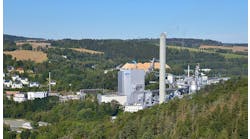Study of Cutting-Edge Control Research to Benefit Stanford Linear Accelerator Center and IndustryPavilion Technologies of Austin, TX, has been awarded a grant through the U.S. Department of Energy (DOE) Small Business Technology Transfer (STTR) program to further advance its research of modeling complex systems using both first-principles equations and empirical information. In particular, Pavilion will enhance algorithms that enable self-validation and diagnostics of these combined models. These developments will result in faster deployment of complex modeling solutions and more robust control of both high-speed accelerator and manufacturing processes. This marks the third DOE grant awarded to Pavilion in the past four years. The Stanford Linear Accelerator Center (SLAC) at Stanford University has collaborated with Pavilion on projects funded by all three awards."Pavilion is known for its innovation in the field of advanced process control and optimization," said Dr. Martin Lee, the collaborating project manager at SLAC. "Our work with Pavilion on the previous two DOE-supported projects has led to the development of an adaptive prediction algorithm for monitoring of luminosity in colliding-beam experiments. On the upcoming project with Pavilion, we look forward to exploring other applications at SLAC based on the technique of combining first principles and neural networks, as well as finding interesting industrial applications. I am confident that Pavilion will continue to work with SLAC to push the boundaries of what is possible, delivering benefits to science and industry."Established in 1962, SLAC designs, constructs, and operates electron accelerators and related experimental facilities for high-energy physics and synchrotron radiation research. In a quest for answers to fundamental questions about the ultimate structure of matter, SLAC uses its accelerators to speed electrons and anti-electrons to nearly the speed of light and then study the collisions of those particles. The complex operation of its accelerators requires numerous operators and monitoring devices to simultaneously control vacuum, particle beam signals, beam-steering and focusing magnets, and many other beam and system parameters. The primary goal of Pavilion and SLAC in this new collaboration will be to explore how a combined modeling solution may enhance the optimization of these control parameters.As accelerator beams become smaller and their energy gets higher, their tolerances become tighter, resulting in more stringent accelerator control. Pavilion’s primary research will test how a combined neural network and first principle modeling approach will accurately reflect drift changes, bringing enhanced control to SLAC’s beam operations. Pavilion has applied similar approaches to industrial processes to reduce the variability, drive down variable costs, increase production and enhance product quality.
Latest from Optimization
Latest from Optimization



